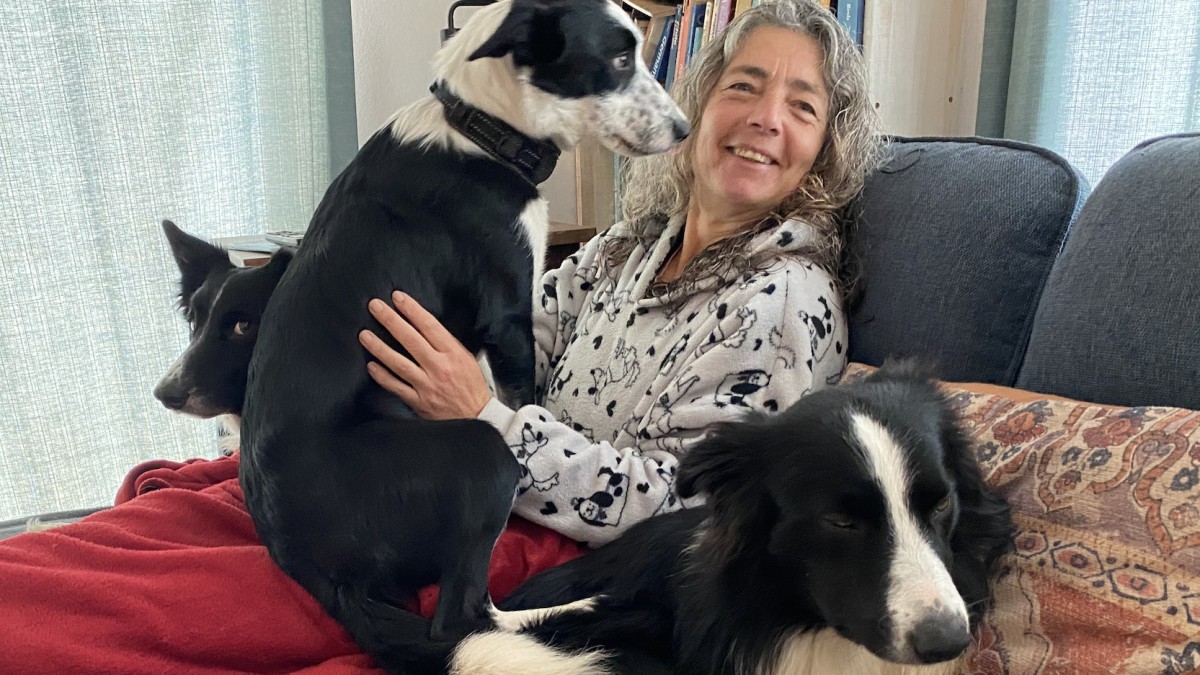Is Your Dog Naughty or Struggling? What Your Dog’s Behaviour Is Really Telling You

Spot the difference: naughty behaviour or a dog asking for help.
We had a dinner party on Saturday. I was super nervous.
Five friends, lots of food, and the memory of the last time we’d had people over. Let’s just say it had ended in chaos: barking, jumping, tag-team frenzy. One dog would stop, another would start, and conversation was impossible.
This time I was determined it would be different.
Because here’s the thing: my dogs aren’t “naughty.” They’re each dealing with their own emotions.
-
One loves people too much—a mix of excitement and anxiety.
-
Stevie is wary of strangers. She barks when she’s scared, and yes, she has nipped before.
-
Falken? Pure excitement. Barking. Humping. You get the picture.
So we planned. Long-lasting chews, meaty bones, and a clear agreement with our friends: let the dogs be.
And it worked.
Sure, they barked when the first guests arrived. But then they settled with their chews. Stevie stayed on her terms, moving closer as she felt comfortable. No one reached for her. No one pushed. And gradually, she relaxed. By the end of the evening, she was curled up asleep in a chair while we laughed and ate.
Not naughty. Not bad. Just dogs who needed support.
Naughty? Or Struggling?
That evening reminded me of something big:
When a dog barks, lunges, or leaps, are they really being cheeky little rebels?
Or are they saying, “Help. This is hard.”
Most of the time, our dogs aren’t giving us a hard time—they’re having a hard time.
So How Do You Spot the Difference?
Here are some classic “naughty” labels that are really signs your dog is struggling:
🐾 Barking at guests/noises → not rudeness, but anxiety or alertness.
🐾 Jumping up → often over-arousal and a desperate bid for connection.
🐾 Growling when touched → not grumpiness, but discomfort.
🐾 Pulling or lunging on walks → not bad manners, but stress spilling over.
🐾 Refusing food outside → not fussiness, but an anxious nervous system.
Signs Your Dog Might Be Struggling
Here’s what struggling often looks like (but often gets called “naughty”):
🐾 Trouble calming down after excitement.
🐾 Startling easily at noises, movement, or new things.
🐾 Avoidance (pulling away, refusing to walk closer).
🐾 Overreaction to everyday triggers (barking, lunging, spinning).
🐾 Ignoring food or refusing to eat in certain situations.
Seen any of these? Your dog isn’t misbehaving — they’re communicating.
What Helps Instead
-
Preparation, not punishment. Think chews, bones, enrichment, and safe spaces.
-
Respect their boundaries. Let your dog choose if and when they approach.
-
Read their body language. Intense chewing, yawning, lip-licking? All signs of stress.
-
Reframe the behaviour. Ask: “What is my dog finding hard?” instead of “Why are they being naughty?”Ready for Your First Step?
If you’ve been feeling overwhelmed by your dog’s behaviour, take heart: there’s a way forward that’s kinder, calmer, and far more effective than just trying to “fix” naughty moments.
We’ve created a free Reactivity Reset Guide with three simple steps you can start today to bring more calm to your walks and your home.
🎁 Grab your free copy here 👉 Do This First
Because behind every “naughty” dog is one who just needs a little help to feel safe. 💛
 Barbara Paterson
Barbara Paterson 